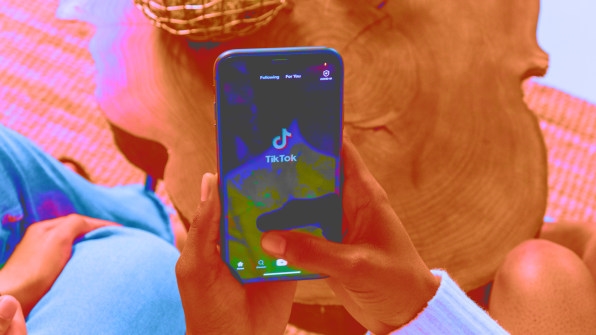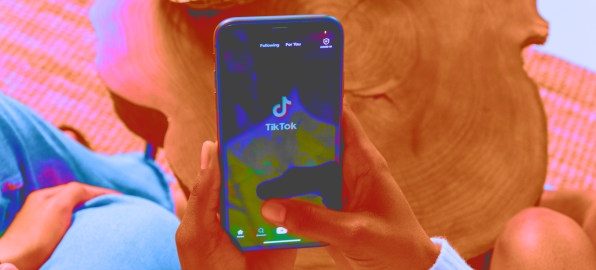When I picked up my 15-year-old daughter from an event recently, I overheard her, as she said goodbye to someone she’d just met, ask them: “Hey, what’s your Snap handle?”
At that moment, I couldn’t help but remember the days when I would scribble down friends’ home phone numbers on torn sheets of paper. I’d wait until after dinner to make calls, nestled in my room with the 10-foot cord from my landline stretched under the door.
It was then that I realized I have a unique view into how this new generation is communicating.
As a mom of three kids between the ages of 15 and 18 (not to mention the numerous other teenagers that make a regular appearance in our home), I’ve been a bystander to their digital behavior, which has equally intrigued and perplexed me as a communicator, especially within the social space I work in, as I am privy to and see the evolution of these trends unfold daily (often hourly).
How is Gen Z really communicating?
According to a study done by Edison Mail, Gen Z’s three core communication channels are SMS (69%), email (31%), and social media (29%). But what’s important to note here is that the survey was conducted among 1,112 adults over the age of 18, meaning that those aged 9 to 18 years old weren’t represented. This is who I am observing every day, and the trends I’ve seen are quite the opposite.
Where SMS came out the front-runner, it’s a channel that is quite outdated in the eyes of my kids. While they do text each other at times, more often than not, their use of SMS is reserved for conversations with adults or, interestingly enough, playing games. iMessage is sometimes used to engage with friends remotely and is something that I’ve even jumped into with my kids—spending hours, all in the same room, challenging each other to games of pool, word hunt, darts, and mini golf.
Where email held second place in the survey, my kids admit that although they all have an email address, it’s rare that they would choose the channel as a preferred method of communication, nor do they know of anyone their age who would. They check their inboxes periodically for communication from teachers, bosses, or coaches, but that’s it.
To really get at the heart of how and where they communicate, it’s social. 
Social media’s rise to the top of the communication charts
There is no question that social has become one of the most adopted communication channels, with over 4.7 billion social media users worldwide and the average user spending nearly 2.5 hours every day on social platforms. And, with over 45% of those users between the ages of 13 and 29, Gen Z truly does sit in a power position within the channels they use.
When we think back to where the actual genesis of the social media space stemmed from, it could have actually occurred well before MySpace—back to the launch of MSN Messenger in 1999, just two years after the first Gen Z babies were born. Since then, the draw for instant messaging has prevailed. It’s just the messaging channels themselves that have evolved and continue to change.
While my habits and preferred means of communication are SMS and messaging apps, my kids primarily use Snapchat. Rather than ask for someone’s phone number, they exchange Snapchat handles, and keep streaks as a way of staying in touch—the longer the streak, the better the connection. But strangely, more often than not, the “message” is nothing more than a photo, and that photo can often be of the ceiling or the wall with no text (they know and admit it’s weird, but they all do it). Even when they photograph themselves, those photos are not curated, they’re often unfiltered and authentic. Much can be communicated through a photo: no words are required, and regardless of the image, they’ve let the other person know they’re thinking of them.
When they have something to say to each other, they often prefer not to call, text, audio message, or even Facetime in real-time; instead, they send a video message over Snapchat. The exchanges can go back and forth for hours without ever talking live. Why? I asked. It allows them the flexibility to receive the message in their time, and it provides an easier end to the conversation than what can be an awkward, “you hang up first” sign off otherwise. Hmm.
A new focus on authenticity
We’ve heard it before, but Gen Z really is all about authenticity, and from my experience, they prioritize social channels that promote this.
Not surprisingly, the primary channel my kids frequent is TikTok. They have the feeling that “TikTok knows everything” and find the app to be more “real” and unfiltered than curated channels like Instagram and Facebook. I’ve seen them shun filters and criticize people (and brands) who try too hard. If a TikTok is an obvious ad, they reject it. But if a brand finds a way to ‘get them’ (i.e., inject brand messaging into a TikTok in a way that feels real), they respect and admire that.

TikTok is where Gen Z seek out life hacks, and research nearly anything they’re wondering about—only turning to search engines if they’re not confident in a source or aren’t finding what they are seeking on social media first. In our house, nuggets of information that came from TiKTok often surface over dinnertime conversations, and I’m always shocked at the depth of subjects.
Feeding Gen Z’s desire for unfiltered reality, BeReal has recently added a new and very interesting distraction. My kids admitted that they look critically at others who don’t follow the real-time prompts and wait hours past to post a more compelling photo. While most posts are boring and the basis of the platform may seem mundane, that’s the point—it’s a glimpse into real life.
What does all of this mean?
Despite the fact that connection is mainly happening behind a screen, Gen Z is more connected than any generation before them.
They like to have control over when and how they communicate. They straddle old and new technology—navigating these channels with ease and quickly adapting to new technology while acquiescing to the channels older generations prefer.
We all need to keep in mind that these nine to 24 year olds, if not already, will soon be our colleagues. Like Brad Pitt said in Moneyball: “adapt or die.” Communication vehicles are moving forward at a blistering pace, and being left behind is increasingly becoming a real risk.
My personal solution has been to readily adopt the social channels they’re using. Give it a try, you might be surprised to find something you like.
Melanie Gaboriault is the global head of corporate communications at Hootsuite.
(23)
Report Post




